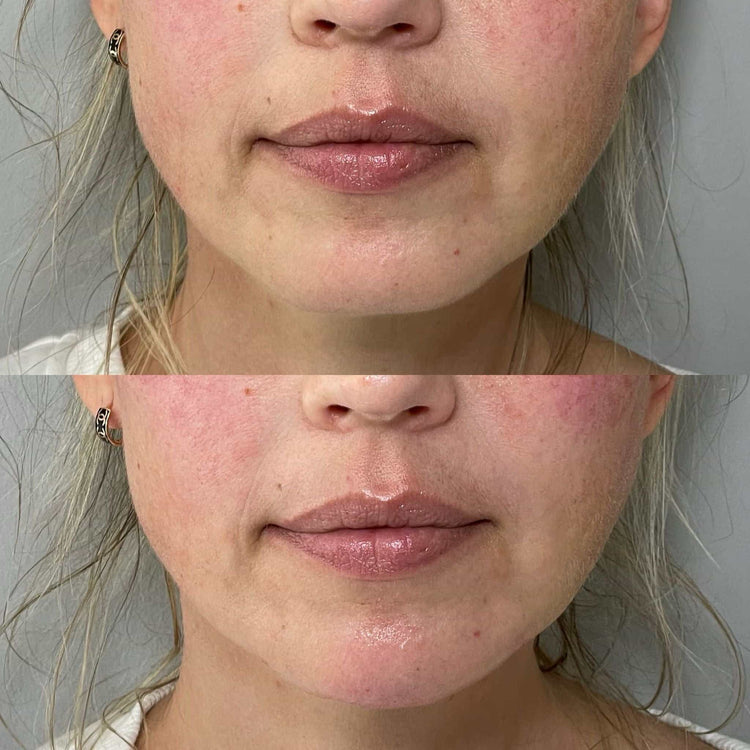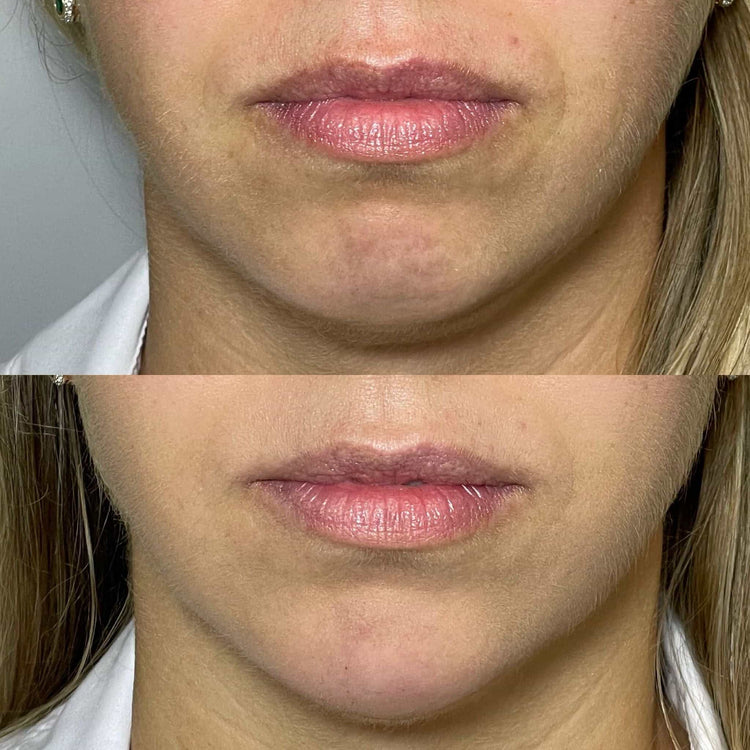Potential Complications
Chin augmentation using fillers has become increasingly popular as a non-surgical option for enhancing facial aesthetics. While generally considered safe, there are potential complications associated with this procedure that should be carefully considered.
Bruising and Swelling
Potential complications of chin augmentation with filler can include bruising and swelling. These are common side effects that typically subside within a few days to a week after the procedure. However, in some cases, bruising and swelling may be more severe or prolonged. Other potential complications include infection, allergic reaction, lump formation, and asymmetry.
Infection
Infection is one potential complication associated with chin augmentation using fillers.
- Bacteria can enter the injection site, leading to an infection.
- Signs of infection may include redness, swelling, pain, warmth, or pus discharge around the injection area.
- If you experience any signs of infection after chin augmentation, it is crucial to seek medical attention promptly.
Allergic Reactions
Allergic reactions are another potential complication associated with chin augmentation using fillers.
Fillers often contain hyaluronic acid, a natural substance found in the body. However, some individuals may be allergic to certain components of fillers, leading to an adverse reaction. Symptoms of an allergic reaction can range from mild (e.g., redness, itching) to severe (e.g., difficulty breathing, swelling of the face). If you experience any signs of an allergic reaction after chin augmentation, it is essential to seek medical attention immediately.
Lumps and Nodules
Lumps and nodules can also occur as a complication of chin augmentation with filler. These are firm, raised areas that develop under the skin at the injection site.
They can be caused by the body’s natural reaction to the filler material or by improper injection technique.
While most lumps and nodules resolve over time, some may require additional treatment.
It is important to discuss potential complications with a qualified medical professional before undergoing chin augmentation with filler.
Long-Term Risks
While chin augmentation using fillers offers a non-surgical approach to enhancing facial aesthetics, it is crucial to understand the potential long-term risks associated with this procedure.
Asymmetry
Long-term risks associated with chin augmentation using fillers are less common than short-term side effects but can still occur. One concern is filler migration.
This occurs when the filler substance moves from its initial injection site to other areas of the face, potentially causing an unnatural or asymmetrical appearance.
Another long-term risk is the need for repeat treatments. As hyaluronic acid fillers are not permanent, they gradually break down over time, requiring booster injections to maintain the desired results.
The cumulative effect of repeated injections could lead to changes in facial structure and texture.
Migration of Filler
Long-term risks associated with chin augmentation using fillers are less common than short-term side effects but can still occur. One concern is filler migration.
This occurs when the filler substance moves from its initial injection site to other areas of the face, potentially causing an unnatural or asymmetrical appearance.
- Filler migration can be influenced by various factors, including the type of filler used, the injection technique, and individual patient characteristics such as facial movement and skin elasticity.
- If filler migration occurs, it may require additional treatment to correct the asymmetry or restore a natural appearance.
Another long-term risk is the need for repeat treatments. As hyaluronic acid fillers are not permanent, they gradually break down over time, requiring booster injections to maintain the desired results.

The cumulative effect of repeated injections could lead to changes in facial structure and texture.
Dissolution and Revision Surgery
Dissolution surgery may be necessary to remove filler that has migrated or caused undesirable outcomes. This procedure involves injecting an enzyme called hyaluronidase, which breaks down the hyaluronic acid filler.
Revision surgery can address complications arising from chin augmentation with filler, such as lumps, asymmetry, or filler migration. It may involve removing excess filler, repositioning it, or adding more filler to achieve a balanced and aesthetic result.
Important Considerations

Chin augmentation using fillers offers a popular non-surgical route to facial enhancement, but potential risks require careful consideration.
Choosing a Qualified Practitioner

Choosing a qualified practitioner is crucial when considering chin augmentation with filler. Their expertise and experience directly impact the safety and outcome of the procedure.
- Ensure the practitioner is a licensed medical professional, ideally a doctor specializing in aesthetic medicine or dermatology.
- Check their qualifications and experience in performing chin augmentation procedures with fillers.
- Look for practitioners who have undergone relevant training and certifications in facial aesthetics.
Before proceeding with the procedure, it is essential to have a thorough consultation with the practitioner.
During this consultation, discuss your desired outcome, medical history, any allergies or medications you are taking, and potential risks and complications associated with chin augmentation.
Don’t hesitate to ask questions and clarify any concerns you may have. A qualified practitioner will provide clear and comprehensive information, ensuring you make an informed decision about your treatment.
Realistic Expectations
Before undergoing chin augmentation with filler, it is crucial to carefully consider the potential risks involved. Understanding these risks allows for realistic expectations and informed decision-making.
Long-term effects, while less frequent than immediate side effects, warrant attention. Filler migration, where the substance moves from its initial placement, can lead to an unnatural appearance. The need for repeat treatments to maintain results raises concerns about cumulative effects on facial structure.
Dissolution surgery or revision surgery may be necessary to address complications like lumps, asymmetry, or filler migration.
Choosing a qualified and experienced practitioner is paramount. Thoroughly research their credentials and ensure they specialize in aesthetic medicine or dermatology.
A comprehensive consultation allows you to discuss your goals, medical history, and potential risks with the practitioner. Asking questions and addressing any concerns ensures you fully understand the procedure’s implications before proceeding.
Aftercare Instructions
Aftercare instructions are crucial for optimizing results and minimizing complications following chin augmentation with filler.
These instructions typically include:
- Avoid strenuous activity or exercise for several days: This helps minimize swelling and bruising.
- Apply ice packs to the treated area: This can help reduce inflammation and discomfort.
- Elevate your head while sleeping: This can also help minimize swelling.
- Avoid touching or massaging the injection site: This can disrupt the filler placement and increase the risk of lumps or migration.
- Follow any specific instructions provided by your practitioner: Your practitioner may have additional recommendations based on your individual case.
Achieve facial symmetry with Chin Filler treatment at It’s Me & You Clinic with Dr. Laura Geige
- Food Play Fetish: Combining Culinary Creativity And Desire - July 14, 2025
- Exploring The Concept Of Relationship Green Flags - July 13, 2025
- Exosome Therapy For Skin Rejuvenation Near Seale, Surrey - July 11, 2025
